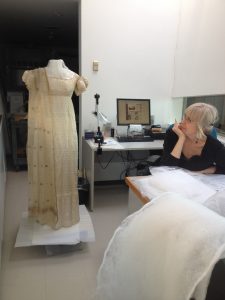About Us
About The Museum
Welcome to the BSM!
Discover the treasures of North America’s inspiring, charming shoe museum.
Located in Toronto, Canada, the Bata Shoe Museum regularly displays over a thousand shoes and related artefacts, chosen from a collection of nearly 15 000 objects, in architect Raymond Moriyama’s iconic, award-winning building. The BSM celebrates the style, development and function of footwear across four impressive galleries, with displays ranging from Chinese bound-foot shoes and ancient Egyptian sandals to chestnut-crushing clogs and glamorous platforms. Over 4,500 years of history are reflected in our permanent exhibition, All About Shoes while our three other galleries feature changing exhibitions – so there’s always something new to see.
How a Personal Passion Grew Into An Internationally Acclaimed Collection
Sonja Bata’s involvement in the global shoe industry enabled her to build one of the world’s finest collections and to create North America’s foremost shoe museum. Within our stunning building lies a wealth of fashion lore and invaluable information.
Shoes are an indication of personal taste and style. Yet shoes can also tell us much about the world’s technological development, and can mark shifts in society’s attitudes and values. Footwear illustrates entire ways of life, reflecting climate, religious beliefs and the development of trades, and how attitudes to gender and social status changed through the ages.
In 1979, when Mrs. Bata’s private collection had outgrown its home, the Bata family established the Bata Shoe Museum Foundation. Over the years the Foundation funded fieldwork to collect and research footwear in communities demonstrating unique innovation at their core – notably Indigenous peoples of Turtle Island (North America) and circumpolar regions spanning Canada, Siberia, Alaska, Greenland, Finland, Sweden, and Norway.
The main objective of the Foundation, however, was to establish an international centre for footwear research. The result was the Bata Shoe Museum, with its unrivalled collection of over 14 000 shoes and related objects.
On May 6, 1995, the Bata Shoe Museum opened its doors at 327 Bloor Street West in downtown Toronto, in an iconic building designed by Moriyama and Teshima Architects. As a unique, world-class specialized museum, it has become a major destination point for visitors and residents alike.
The BSM Collection
The mission of the Bata Shoe Museum is to communicate the central role of footwear in shaping the social and cultural life of humanity. Through acquiring, conserving, researching, interpreting and exhibiting material evidence of the history of footwear and shoemaking, the museum illustrates the changing habits, lifestyles, culture and customs of the world’s inhabitants. The BSM’s international collection of nearly 15 000 artefacts spans 4,500 years of history.
The Bata Shoe Museum is home to the world’s largest and most comprehensive collection of shoes and footwear-related objects. In addition, it is an internationally recognized centre for footwear research that sponsors field research, publishes research findings and promotes education.
At present, the permanent collection contains artefacts from virtually every culture in the world. Where else could you find French chestnut-crushing boots under the same roof as delicately-embroidered Chinese silk shoes, bear fur shoes made for Japanese samurai warriors and footwear made from human hair?

Highlights From The Collection
A rare and well-preserved velvet-covered platform chopine from 16th-century Italy is one of the great treasures of the museum’s fashion footwear collection, which ranges chronologically from the Italian Renaissance to the catwalks of today’s designers. This chopine – so tall that the wearer could not walk unaided – provides an interesting introduction to other equally outrageous shoe styles introduced over the centuries. Salvatore Ferragamo and Vivienne Westwood weren’t the first designers to think of platforms; nor, if history teaches us anything, will they be the last.
One of the most important aspects of the BSM’s collection is a diverse array of Indigenous footwear belongings from across Turtle Island and the circumpolar region. This collection, along with the research commissioned to study Indigenous footwear and design methods, has greatly contributed to the scholarship of shoes.
Among the collection’s most popular features is an extensive assortment of celebrity footwear, including Queen Victoria’s ballroom slippers, Robert Redford’s cowboy boots, Elton John’s monogrammed silver platform boots, Terry Fox’s running shoe, Elvis Presley’s blue patent loafers, Karen Kain’s ballet shoes and John Lennon’s Beatle boot. Please note that for conservation purposes these items are not always on display.
The museum’s archaeological collection includes footwear from some of the earliest civilizations on earth: ancient Egyptian sarcophagi with painted sandal designs, leg-shaped perfume vials made by an ancient Greek potter, and Roman bronze lamps representing sandal-clad feet. The collection also includes intriguing examples of medieval footwear.
But the BSM’s collection doesn’t stop at shoes. We also have a companion collection of shoe-shaped ornamental artefacts such as majolica hand-warmers and inlaid fruitwood snuffboxes, as well as graphic material from 14th-century woodcut prints and 19th-century caricature lithographs to original paintings and sculptures.

Conservation
Conservation at the BSM

Conservation may be defined as “any action taken to preserve or prolong the life of museum artifacts”. This means that the conservator does everything possible to prevent ongoing artifact deterioration and destruction due to structure, material, people or the environment.
Restoration may be defined as “any action taken to return an artifact to its original intended state”. This includes removing signs of wear and replacing missing parts.
It is the practice of the Bata Shoe Museum to conserve rather than restore: we believe that worn footwear has a more significant cultural meaning than unused pristine shoes. Signs of wear such as stretched leather, dirt on soles, even alterations & modifications are evidence that these are real shoes worn by real people.
For more information on the Bata Shoe Museum’s conservation department and practices, visit our blog A Step into the Bata Shoe Museum.
